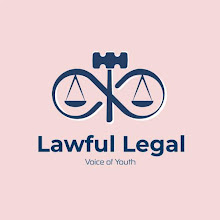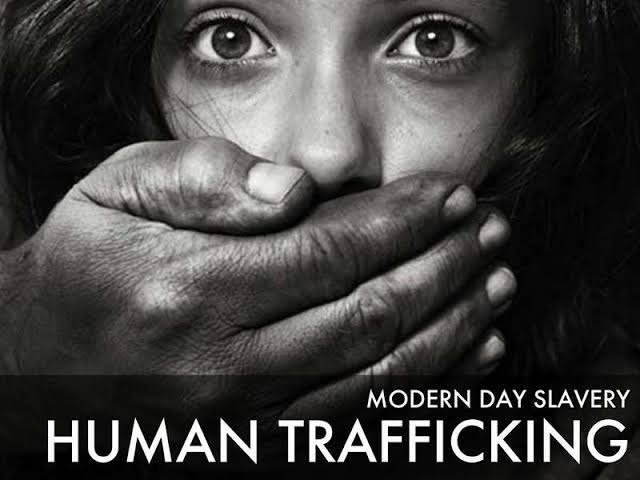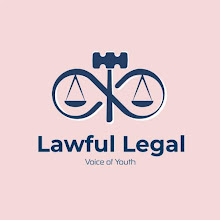HUMAN TRAFFICKING AS A MODERN FORM OF SLAVERY
Author:- Aditi Bhaiya, a student of Maharashtra National Law University, Nagpur
Slavery has existed from the earliest times. For most people, slavery, “is the practice of forced labor and restricted liberty. It is also a regime where one class of people - the slave owners - force another - the slaves - to work and limit their liberty”. It is difficult to pinpoint the exact time the practice of slavery had actually begun, although, historians can trace the roots of this inhumane practice back to almost 11,000 years. The practice of slavery has existed from the ancient world owing to several factors, such as – debt, war, punishment for a crime etc. The practice of slavery changed dramatically as global war, invasion and conquest spread across continents. This led to chaos and confusion as the citizens of the conquered territories were enslaved and transported many miles as slaves to their captors.
An inhumane practice as that of slavery has been known to generations since time immemorial. It will be pertinent to mention that at several points in history, numerous liberations have worked to free a particular class of people. Like, the Abolitionist Movement aimed at abolishing the practice of slavery. Unfortunately, even after several attempts made to bring the practice of slavery come to an end, it still persists. The so called ‘modern-day’ slavery, such as human trafficking still exists around the globe. Reports estimate that there are roughly 40.3 million enslaved people currently in bondage. According to the reports of the International Labor Organization, human trafficking has become the fastest growing crime globally and, it is the third largest crime.
Slavery, including its current forms, and human trafficking are crimes prohibited by international human rights law. Yet millions of people around the world are still forced into slavery and other modern forms of slavery. Millions of people around the world are also trafficked for purposes of exploitation, including sexual and labor exploitation, removal of organs, forced marriage or forced criminalization. This abuse continues even as we approach 100 years since the adoption of the Slavery Convention of 1926 and more than 20 years since the Palermo Protocol.
Victims of slavery and human trafficking are often victims of a number of serious human rights violations. Although they have the right to an effective remedy, they often do not receive justice due to limited awareness and a number of structural constraints, including the authorities responsible for supporting or presenting such claims.
“Today, there are countless men, women and children who are trapped through the use of violence, deception or coercion, and exploited by traffickers for their own financial or personal gain,”
Moslow-Benway.
Human trafficking involves recruitment, harboring or transporting people into a situation of exploitation through the use of violence, deception or coercion and forced to work against their will. The United Nations on its part have defined human trafficking as follows, “the recruitment, transportation, transfer, harboring or receipt of persons, by means of the threat or use of force or other forms of coercion, of abduction, of fraud, of deception, of the abuse of power or of a position of vulnerability or of the giving or receiving of payments or benefits to achieve the consent of a person having control over another person, for the purpose of exploitation.” Exploitation shall include, at a minimum, the exploitation of the prostitution of others or other forms of sexual exploitation, forced labor or services, slavery or practices similar to slavery, servitude or the removal of organs. In other words, trafficking is a process of enslaving people, coercing them into a situation with no way out, and exploiting them. It is a very evil practice which is said to have emerged from social, political and economic deficiencies.
In conclusion, I would only like to say that, even though many people may link slavery with the past, the sad fact is that slavery is a more prevalent problem in today’s world. The figures are higher than ever and continue to rise. There are many misconceptions about the realities of modern slavery, as well as a great deal of fundamental knowledge that many people are ignorant of. Knowledge is power, and in the effort to equip citizens with the tools to fight this growing threat, we have been able to show that modern day slavery is real.
*****




![Freedom of Speech in India [Indian Supreme court and Law of Sedition]](https://blogger.googleusercontent.com/img/a/AVvXsEiGLLUmLKq5Da6xDZplasOZHKRj-jOhWPkoeuy0_Eq757tUpOiHz-xooXwIlAjF0-hmBfi-TtMIv6on_sVgBXVq4wbWwnbsqLOcNX22S8C2aSq-ZuK3vn9wWAx8tXByYOBfwc0hs6b8RJV84YNFG2greouGKjup6g8kN-xVlchW33VHdSSmrhLC1BUEVbGp=w680)





